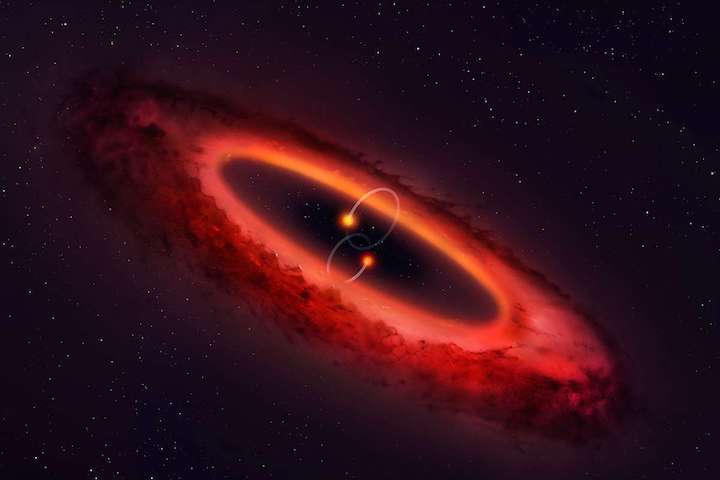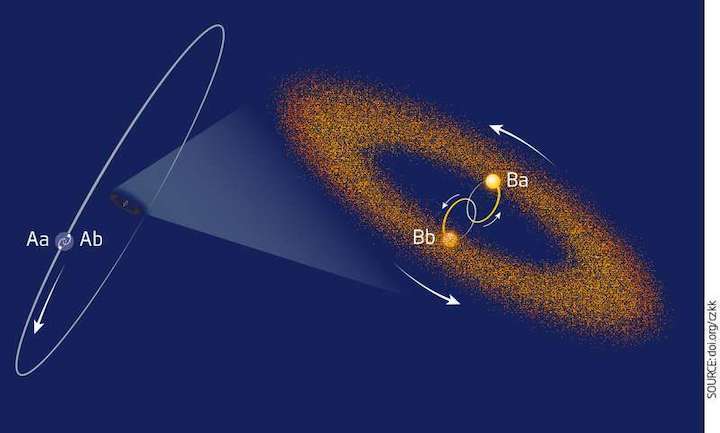15.01.2019

This mixed-up star system has an unusual set of orbits
University of Warwick/Mark Garlick
There is a star system 146 light years from Earth that is quite strange. At its centre is a set of binary stars, and around that loops another binary pair. In between is a ring of dust and gas that’s set at a very odd angle.
The dust and gas of this system, which is called HD 98800, are part of a disc that may be forming planets in a kind of cosmic nursery. Instead of lying on the same plane as the central stars, this disc’s orbit is perpendicular to that (pictured above).
The full system is even more confusing (see graphic, below). Picture two linked rings held in the air, one dangling from the other. These are the orbits of the central stars. The protoplanetary disc circles them, like a hula-hoop placed over the rings parallel to the ground. The outer pair of stars goes up and over the hula-hoop and comes back under to complete its orbit.
“What I suspect the outer binary does is stop the disc from being bigger,” says Grant Kennedy at the University of Warwick in the UK, who used the Atacama Large Millimeter Array telescope to image the system. “If the disc was a lot bigger, the outer binary would strip material away.”

The gravitational tug of both sets of stars helped orient the disc in such a weird way. “It’s like if you drop a hula hoop on the ground and it wobbles back and forth and eventually becomes flat,” he says.
Kennedy says any planets that form here might not survive this bizarre setup. The inner stars orbit one another every year, and a planet in the disc would orbit them every 3 years. On a tilted planet, seasons would be affected by both of these movements, Kennedy says.
“If you were on such a planet, you’d have two shadows some of the time, and one or two stars over the horizon at times. There would be some degree of chaos,” he says.
Quelle: NewScientist
